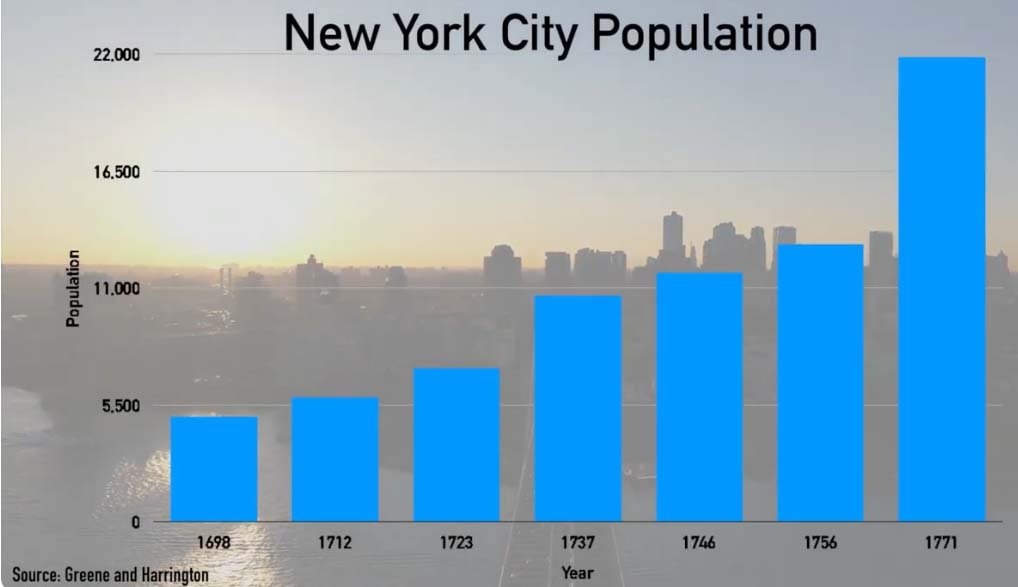New York City is a big apple and one of the control centers of the global economy. It’s also the financial capital of the world’s largest economy, the United States, and is home to more than eight million New Yorkers. New York City has been one of the most important economic cities in America. How did this all happen?
What made New York City so influential?
New York City keeps the global economy functioning, but for 100 years now and still to this day. It plays a vital role. So influential and are its days numbered to answer those questions and more, we must start with the history of the economy of New York City. Back when New York was the home of pizza-dragging rats, a trading post was established in the area in 1624, and this was the case for a long time before.
The Dutch rolled up, and the area was populated by various native Americans. They later renamed their post in Amsterdam at that point. New York City was not much more than a trading post, but the arrival of the duct acted like a catalyst for various goods as well as exploits.

The hell out of the small, growing village as a point of entry for Europeans wanting to trade. The Dutch effectively established the place, as history has often shown us that exploding places for business can be great. Between 1698 and 1771, the population quadrupled to 21, and it has remained that way since this rapid growth in New York City. It became the largest city in the state in 1790 after a brief period of 800 peoples and stripes. The capital’s population was down to a multitude of factors, some of which included its location along the east coast, which gives it access to the Atlantic.
While somewhat shielding it from the ocean at the same time. It produced many small vessels necessary to navigate the internal waterways. Building was a really big industry in New York City. It played a vital role, in fact, back in the day of the ever-expanding USA. As well as the large transatlantic passenger ships that helped fuel a boom. Migrants coming from a broad range of countries were also a source of the Atlantic Ocean. It was now linked to the Great Lakes via New York City.

In 1825, with the completion of the Erie Canal, labor was needed to help build these ships and become part of a growing industry. This was another pivotal point for the Big Apple, which solidified its status as a regional powerhouse in the late 18th and early 19th centuries in New York’s banking and finance sectors.
Economy of New York City Banking Journey
It was later joined by New York Commercial Banking, which began in Manhattan with the Bank of New York opening its branch during a 20-year period from 1784 to 1804 on the stock exchange. which has its roots traced back to the 1792 buttonwood agreement, and in 1799, the JP Manhattan Company was established. which is a predecessor institution of today’s JP Moragan Chase. Now fast forwarding through the 19th century, New York City really grew into the city we know and love today. It began to manufacture and export all sorts of goods, from furniture to clothing, which helped provide the many jobs needed by a booming population.
It was this mixture of finance from its banks, raw materials from its ports, and cheap labor arriving at its shores that made New York City a business hub throughout the 20th century. Though New York City’s economy experienced a shift away from manufacturing and towards a new age, the information age, this saw financial and professional services grow in importance.
While also leading to a brief reduction in the city’s population. However, towards the end of the 20th century, New York had weathered the worst of the storm and since then has often been cited as the financial capital of the world. With its financial sector running supreme as well as a rapidly growing tech scene with economic history summed up, perhaps you’re wondering how large and influential New York City’s economy is today.
How large and influential is New York City’s economy?
Now, before we jump into the figures, let’s take a moment to define what we mean by New York City. New York City, which contains five boroughs and four districts: Manhattan, Queens, the Bronx, and Staten Island, is home to approximately 8.4 million people. These 8.4 million New Yorkers actually represent less than half of those living in New York’s metropolitan area, which, depending on which source you read, is somewhere between 18 and 22 million people, similar to the populations of these countries.
This is important to note since New York City’s economic data is often confused with that of the whole metro area and with that of New York State. With that said, the following data refers to the five boroughs and not the mega-concrete jungle, so in 2017, New York City’s GDP was $937 billion US dollars. This figure is enormous for a city.

You can see it here when compared to other cities like Singapore, Hong Kong, and London. The big apple really stands out; in fact, it would be better to compare it to countries like the Netherlands and Indonesia, a country with more than 265 million people. This large economy puts New York City’s GDP per capita north of $110,000+ US dollars.

Furthermore, it’s worth pointing out that the median household income in the city is $60,000, according to the Federal Reserve Bank of New York City. Now we’re sure that most of you know that New York City is a booming economic hub, and that doesn’t really need too much explaining, but perhaps you’re not aware of what has been driving the growth of the city in the last decade until 2020 came around with a baseball bat.
What drives New York City’s growth?
Yes! New York City is known the world over for Wall Street, and rightly so, the city’s financial sector is beastly, with the securities industry being extremely important. Despite contributing less than 5% of the jobs in New York City in 2018, the securities industry repressed 20% of all private sector wages paid.
This is extremely impressive, but with only 15,400+ jobs added in the last 5 years in the industry, most New York’s aren’t finding themselves on average wages in the industry of $398,600 dollars in order to understand what is driving most of New York’s growth. Let’s take a look at some graphs of employment in the city of King Kong. Once set foot in, it had been growing rapidly prior to the COVID-19 onslaught.

In this graph, we can see that between 2010 and 2019, approximately 1 million new jobs were created.

This is in relation to its population, which has remained stable during the same time period. It’s worth pointing out that many people who get to work in New York City don’t necessarily live in its boroughs but instead live in the metropolitan area, the one we spoke about earlier.
With New York City being known for its financial hub status, which currently ranks first globally ahead of London and Shanghai. You might be inclined to think that this sector is one of the top performers in the city.

Furthermore, in this graph, we can see that although employment in the finance sector has seen impressive growth since a low in 2010, it hasn’t surpassed the figure seen in 2000. This doesn’t mean that the finance sector is a dying sector far from it, but rather that, as a proportion of total employment, it’s not as important as it once was.

Two areas that have seen stellar growth in the first two decades of the 21st century are the leisure and hospitality sectors, as well as the education and health sectors. These two sectors alone will fall just short of doubling their entire workforce in just 20 years.
This is outstanding since we’re not talking about a growing city in an emerging market whose population is still very rural; instead, we’re talking about a developed economy that has already experienced most of the benefits of an urbanizing national population.

It’s also worth adding that the professional and business service sector, which is also considered a high-income sector, has experienced some impressive growth over the decade, adding more than 200,000 jobs. So what does all this growth mean going forward?
What can we expect from New York City’s economy in the coming decades?
Will its position as a global center for finance be threatened in the next 30 to 50 years? A lot is expected to change in the global economy, and as a result, newcomers will emerge to compete alongside the long-established capitals of finance like New York City. One of the current advantages that will most likely diminish and impact New York City’s dominance is the fact that it will no longer be located in the world’s largest economy.
Although not the determining factor in establishing New York City’s dominance, the fact that it is the financial capital of the enormous United States economy does give it some advantages over its peers. Furthermore, in the next 30 to 50 years, we’re likely to see China and perhaps even India surpass the USA’s normative GDP figure.
Now, this doesn’t ensure that Mumbai or Shanghai will suddenly become the most important global financial hub, but it will erode some of the pull factors for New York City. Despite this, New York City does maintain a list of advantages over the up-and-coming megacities of the future. Which include its access to human capital, current financial hub status, reputation, and competitive business environment, all of which are elements New York City leads the world in.
Read Also: How Much is Joe Biden Net Worth
Final Thought
New York City is perhaps the most recognized city in the world. Its economic and cultural reach goes far beyond the boundaries of its boroughs and positions. As an open and welcoming city for international trade, investors and businesses are hard to compete with as the next few decades come and go, as I’d expect.
New York City still plays a relevant role in the global economy. Its own domestic market will most definitely fall in importance as emerging markets across the world outstrip New York City’s growth, but its role as a city that maintains the global financial plumbing will take some doing, especially with its international reputation and the US dollar still being by far the most important currency across the globe. Only time will tell if this city ever goes to sleep.
FAQ
Which is the largest economy in the world?
The largest economy in the world is New York City of the United States of America.
Daniel Jack is a senior finance and insurance writer and analyst at The US Pedia. For more than 8 years, he has been helping consumers learn about the finance, insurance and banking related. Daniel enjoys translating the complexities of insurance into easy-to-understand advice and tips to help consumers make the best choices for their needs. He completed his MBA (Master of Business Administration) from the University of Chicago.









